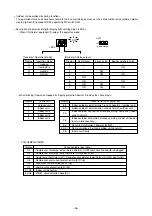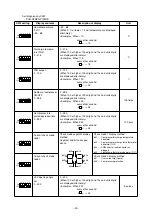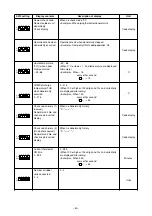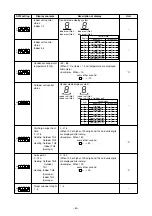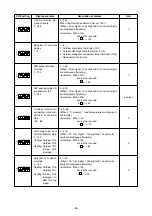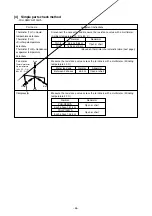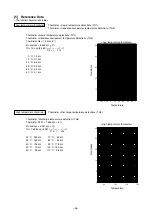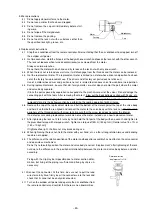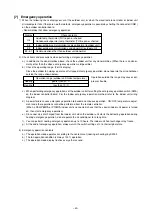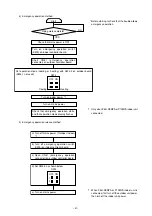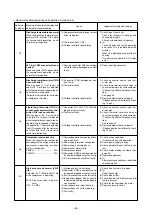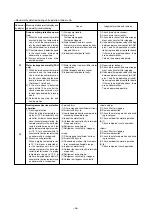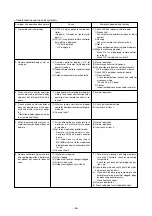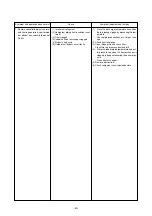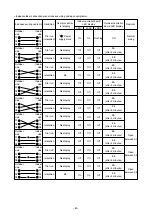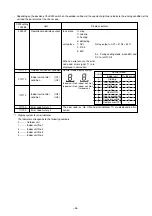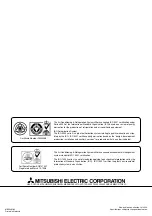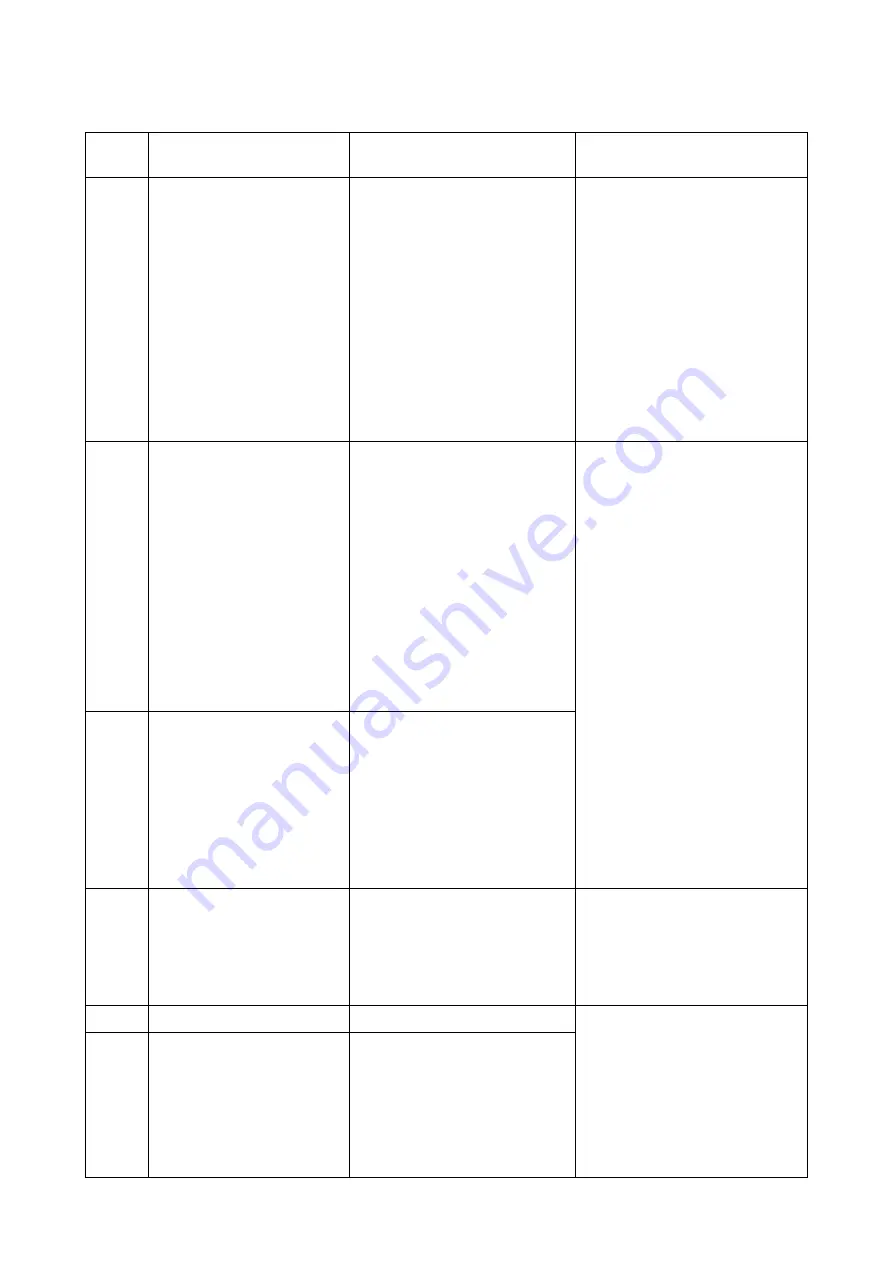
–42–
[8] Self-diagnosis and troubleshooting
<Abnormality detected at power on>
Abnormal-
ity display
None
EA
Eb
EC
F1
F2
Meaning of abnormality display and
abnormality troubleshooting
Indoor/outdoor connection erro-
neous wiring, too many indoor
units (5 or more)
1. Outdoor controller board automati-
cally recognizes the number of
connected indoor units. However,
when the number of connected in-
door units cannot be set due to er-
roneous indoor/outdoor connec-
tion, erroneous wiring, etc. even
after 4 minutes have elapsed since
the power was turned on, an ab-
normality is recognized.
2. When the outdoor controller board
identified “5 or more” connected in-
door units, an abnormality is rec-
ognized.
Indoor/outdoor connection erro-
neous wiring
The outdoor controller board auto-
matically sets the unit No. of the in-
door units. However, when the unit
No. of the indoor units cannot be set
due to indoor/outdoor connection er-
roneous wiring even after 4 minutes
has elapsed since the power was
turned on, an abnormality is recog-
nized.
Start-up time over
When start-up processing does not
end even through 4 minutes has
elapsed since the power was turned
on, an abnormality is recognized.
Reverse phase detected
Missing phase detected
Cause
(1) Voltage not applied to outdoor unit ter-
minal block TB1.
a. Power supply circuit breaker not
closed.
b. Power supply terminals connection
faulty, or disconnected.
c. Missing phase (R or S phase)
(2) No electricity at controller board power
supply connector.
a. Power supply connector contact
faulty.
b. Terminal R/1 or S/2 on controller
board disconnected.
(3) Outdoor unit controller board faulty.
a. Blown fuse on controller board.
b. Part faulty.
(1) Indoor/outdoor connection wire con-
tact faulty or erroneous wiring.
(2) Indoor/outdoor connection wire diam-
eter or wiring length outside specifi-
cation.
(3) Five or more indoor units connected
to outdoor unit.
(4) Outdoor controller board send/receive
circuit faulty.
(5) Indoor controller board send/receive
circuit faulty.
(6) Noise has entered on power supply
or indoor/outdoor connection wire.
(1) Indoor/outdoor connection wire con-
tact faulty, or erroneous wiring.
(2) Indoor/outdoor connection wire diam-
eter or wiring length outside specifi-
cation.
(3) Outdoor controller board send/receive
circuit faulty.
(4) Indoor controller board send/receive
circuit faulty.
(5) Noise has entered on power supply
or indoor/outdoor connection wire.
(1) Indoor/outdoor connection wire con-
tact faulty.
(2) Indoor/outdoor connection wire diam-
eter or wiring length outside specifi-
cation.
(3) Noise has entered on power supply
or indoor/outdoor connection wire.
Power supply reverse phase connection.
Power supply missing phase.
Judgment method and remedy
(1)
a. Check power supply circuit breaker.
b. Check power supply terminal block
connections.
c. Check power supply terminal block
connections.
(2)
a. Check power supply connector board
connections.
(3)
a. Replace fuse.
b. Replace controller board.
(However, when cannot be repaired
even through the check above was
carried out.)
(1) Check if indoor unit or outdoor unit in-
door/outdoor connection wire discon-
nected or loose. Also check polarity.
(2) Check indoor/outdoor wire diameter
and wiring length.
Outdoor-indoor: Max. 50 m
Indoor-indoor (span): Max. 30 m
Also check that VVF and other flat
cables are connected in S1, S2, S3 or-
der. (S2 in the middle)
(3) Check number of indoor units con-
nected to outdoor unit.
(4) Check by turning power off and on.
If abnormality is displayed again, re-
place outdoor controller board or indoor
controller board.
*
LED3 of the indoor controller board
flashes when communication is being
performed.
(1) Check power supply terminal block
connections.
(2) Replace controller board
(However, when cannot be repaired
even though check above was carried
out.)

